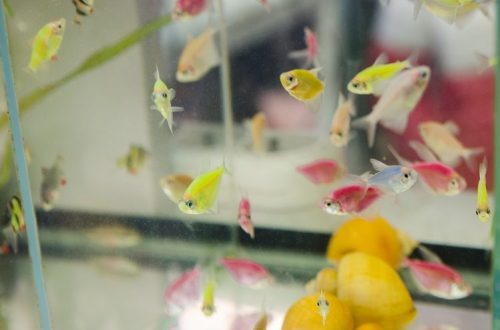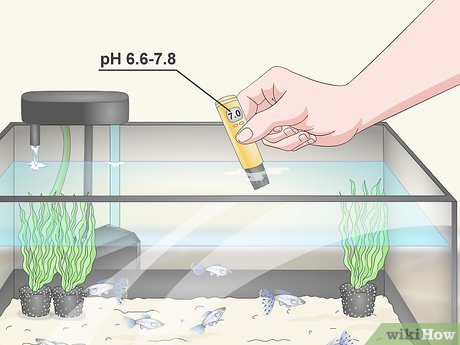
How to test the water in an aquarium
Any fish is very sensitive to the chemical composition of the water. If you’re worried about the health of your fish, if you’re just starting out as an aquarist and stocking up a new aquarium, or if your fish are sick, then this is the time to check your water chemistry.
It is worth remembering: there is no single test to determine “bad” or “good” water in an aquarium, its composition is very complex and has many parameters that are measured separately.
The most requested options are:
- water hardness (dGH value)
- pH value (pH parameter)
- content of nitrogen compounds (ammonia, nitrites, nitrates)
- redox potential (oxidizability), etc.
Almost all parameters can be determined with special aquarium water test kits. They are small bottles with reagents and reference cards (colored stripes). In pet stores or via the Internet, you can order both a separate test for a specific water parameter, and a whole set, where there will be many testers for most parameters.
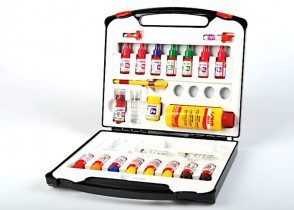
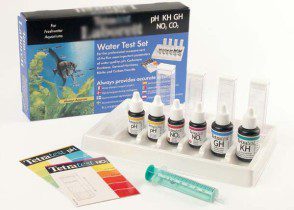
Such tests are the most popular and do not require deep knowledge of water hydrochemistry from the aquarist. In fairness, it should be noted that they do not always give correct results, they have a high proportion of distortion inherent in them, but this is not critical for home use. There are more reliable methods, but they are time consuming and/or require special knowledge and often expensive equipment.
The classic algorithm for testing water using a test
Step №1.Purchase a test kit. For beginner aquarists who are not familiar with the peculiarities of the composition of aquarium water, it is recommended to purchase a test kit for all parameters. It costs more, but provides ample opportunities for experimentation and self-learning with practical examples. In addition, it is always better to buy in bulk rather than retail and replenish the completed tests in the set as needed.
Step №2. Take a test tube, if not included, you can use any transparent small container, such as a glass, a glass, and others. Rinse it thoroughly and dry it. Remember that cleaning agent residue will greatly affect the results.
Step №3. Draw the required amount of water from the aquarium (the required volume is indicated in the instructions). If the set has a test tube, it is usually marked with a sign, how much water to draw.
Step №4. Add the desired indicator reagent (to determine dGH, pH, etc.) drop by drop to the collected water. In this case, you should strictly follow the instructions, otherwise you risk getting wrong results.
Step №5. Shake the water with the reagent indicator (unless otherwise indicated in the instructions).
Step №6. Wait 5 minutes (unless the instructions say otherwise).
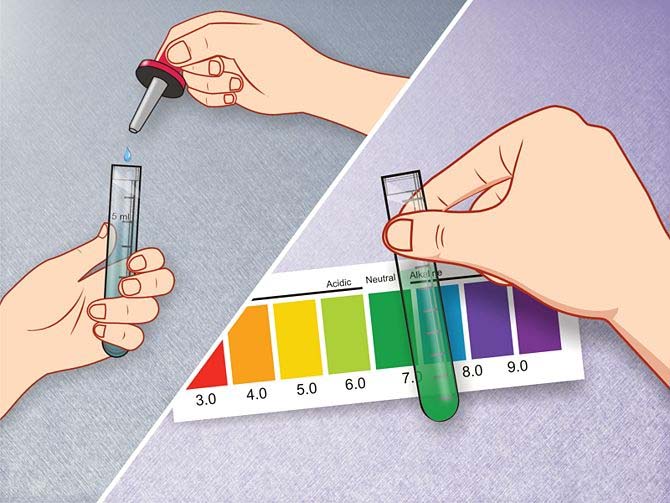
Step №7. Compare the color of the resulting water in the reference map. Hue may not always coincide with a specific color in the map, often it is in the range of neighboring colors, but this is enough to determine the value of the indicator (pH level, water hardness, etc.).
Step №8. Discard the water from the vial and wash well for next use.
Step №9. Based on the results, action should be taken, for example, if the water is too hard for your inhabitants, it needs to be softened, etc.
Tips:
- Before testing, always wash your hands and the water container so that contamination does not affect the result.
- Use liquid indicators instead of test strips (litmus papers), they are less accurate.
- Some pet stores provide paid services for chemical analysis of water, where many indicators are checked.
- When comparing the resulting color of the water with the reference map, do it in daylight if possible, as many incandescent lamps change color drastically.



